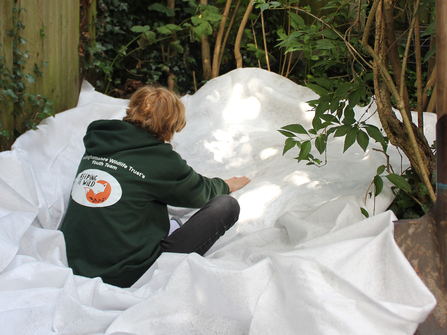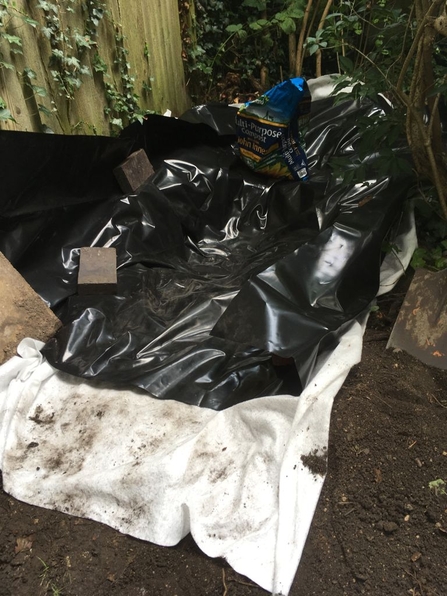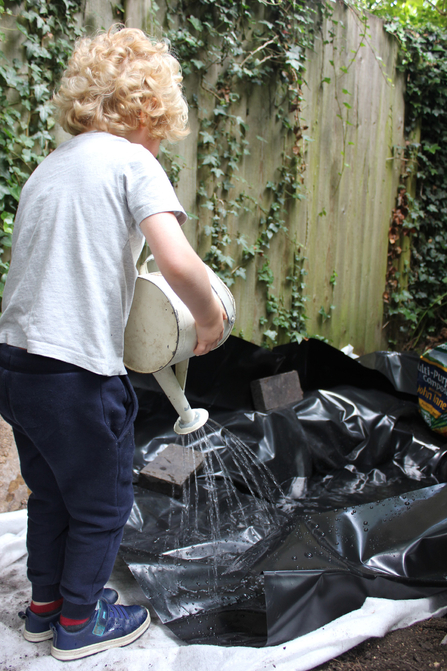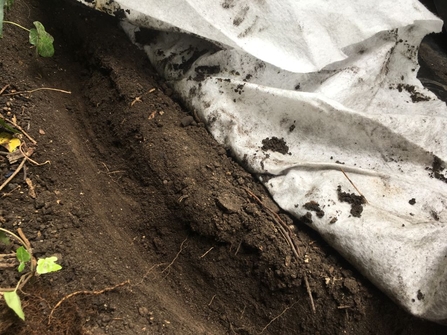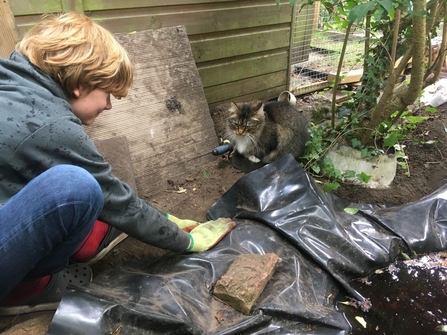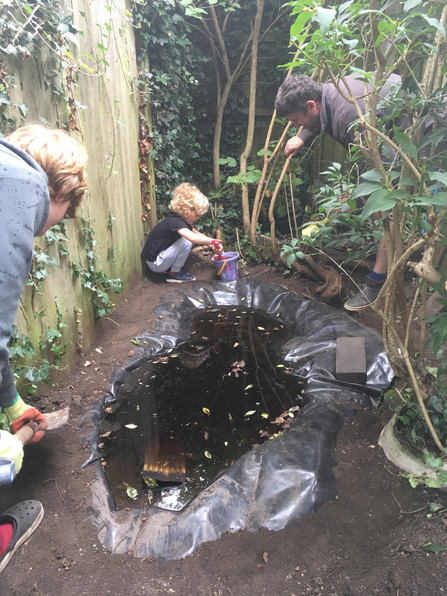As mentioned in our Go Wild with the family this summer holiday blog, here is the second part of our blog series in which the Shepherd family build a wildlife pond in their back garden!
After digging the pond area out, the next step was to add the fleece underlay and plastic liner to make the pond waterproof. The fleece acts as a protective layer to stop anything sharp like stones or sticks piercing the liner.


